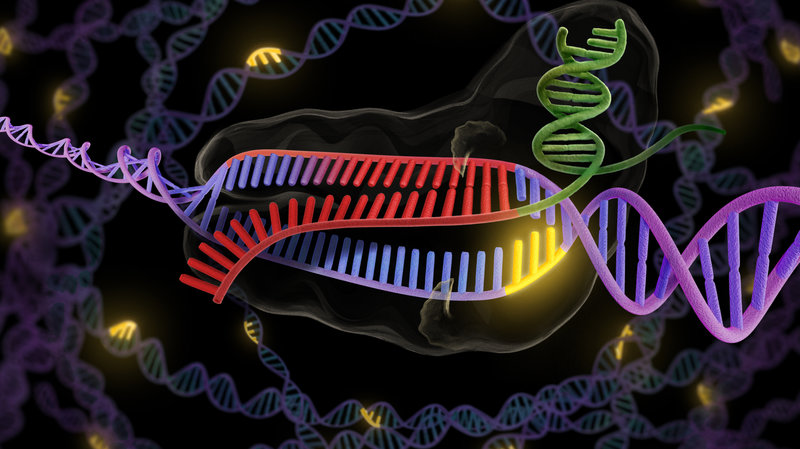Stop Doing PR, Start Questioning: BBC Correspondent on CRISPR Coverage

Image courtesy of Jennifer Doudna/UC Berkeley
SAN FRANCISCO—Since its discovery in 2013, CRISPR-Cas9 technology has allowed scientists to edit DNA in an unprecedented way. How should science writers approach covering CRISPR?
At the World Conference of Science Journalists 2017, one senior journalist offered a clear reply: With healthy skepticism.
“When did we think as science writers that our job was to do the public relations of scientific organizations?” asked Pallab Ghosh, science correspondent for BBC News in the U.K. “Our job should be to challenge and question whether gene editing leads to the end of inheritable diseases… We need to do better. We need to up our game.”
Ghosh made his remarks during a 28 October session titled “Reporting on Genome Editing: An International Discussion.” The panel united five journalists from different nations to share their experiences covering CRISPR (Clustered Regularly Interspaced Short Palindromic Repeats). This technology uses a special protein complex from bacteria to edit DNA. The method is so effective that it has revolutionized the field of biotechnology.
Bringing ethics into news coverage
Columnist Carl Zimmer of The New York Times and host Natasha Mitchell of the Australian Broadcasting Corporation agreed that journalists ought to play an important role in the CRISPR revolution.
To Mitchell, that is especially the case when it comes to sensitive topics like eugenics—favoring certain genes during reproduction in the belief they are superior. This could become a grave threat for some people, Mitchell said, so coverage of CRISPR must bring ethics into the discussion.
“As reporters, I hope that we consider the voices of those who are facing the prospects of their own eradication,” said the Australian journalist.
In a separate talk, CRISPR co-creator Jennifer Doudna of the University of California, Berkeley, praised the media coverage, which she attributed to reporters doing their “homework” on understanding how the science works.
“Occasionally you do see something like ‘CRISPR babies,’ but I think overall the reporting has been quite good,” Doudna said. She stated that the only discouraging part of the coverage is a heavy focus on the so-called “patent wars”—the ongoing dispute between UC Berkeley and the Massachusetts Institute of Technology over the technique’s origins.
International coverage differences
CRISPR has quickly transcended borders. In the panelists’ experience, reporting about the technique around the world changes dramatically, depending on the context.
At first, as Zimmer explained, reporting in the U.S. focused on how the technology actually works to edit the genome, and on the ethical consequences it might bring to the table.
After this initial wave, CRISPR research started moving quickly. Since then, media coverage has focused on trying to keep up with the new discoveries, which are more frequent. “You kind of know it’s gonna go out of date really fast,” Zimmer reckoned.
“The technology is moving so fast that I’m literally trying to proofread the book today,” said Zimmer, noting that he might try to include a brand-new CRISPR technique in his upcoming book on heredity, She Has Her Mother’s Laugh.
According to Xiaoxue Chen, editor of The Intellectual, coverage in China has focused heavily on the ethics of CRISPR. To her, the scientific explanation isn’t enough to attract the public’s interest. The stories must contain an ethical and unusual focus.
The greatest medical advance ever seen? “The answer to that is ‘no.’”
In contrast, stories in Argentina and the U.K. have mostly avoided ethical questions. If anything, they have overhyped CRISPR’s dimensions.
“‘Could we converge on the greatest medical advance ever seen? Greater than the defeat of smallpox and cholera?’” Ghosh read from a British news article. “The answer to that is ‘no,’” he concluded.
Argentina’s coverage has focused on CRISPR development in the U.S. and China, explained Valeria Román, former science editor of the daily newspaper Clarín. Román noted that there are huge opportunities to cover CRISPR from a local perspective in Latin America, based on the large volume of research using the technique.
In Australia, Mitchell pointed out, much discussion now focuses on trying to figure out the legality of the research. “It’s still not clear,” she said, “if current legislation would allow research into editing the human embryonic genome.”
—
Corrections: An earlier version of this story omitted Carl Zimmer’s comment that he is trying to update his upcoming book by including the latest CRISPR technique. The story also incorrectly stated that Argentina’s CRISPR coverage has been Eurocentric; rather, it has focused on CRISPR’s use in the U.S. and China.
—
Sebastián Rodríguez is an undergraduate in communications with a major in journalism at the Universidad de Costa Rica. He is a contributor to the weekly journal “Semanario Universidad” in its climate change section, called “Ojo al Clima“. He also contributes to the communications team at the Interamerican Association for Environmental Defense. Write to Sebas at sebas211297@gmail.com.
